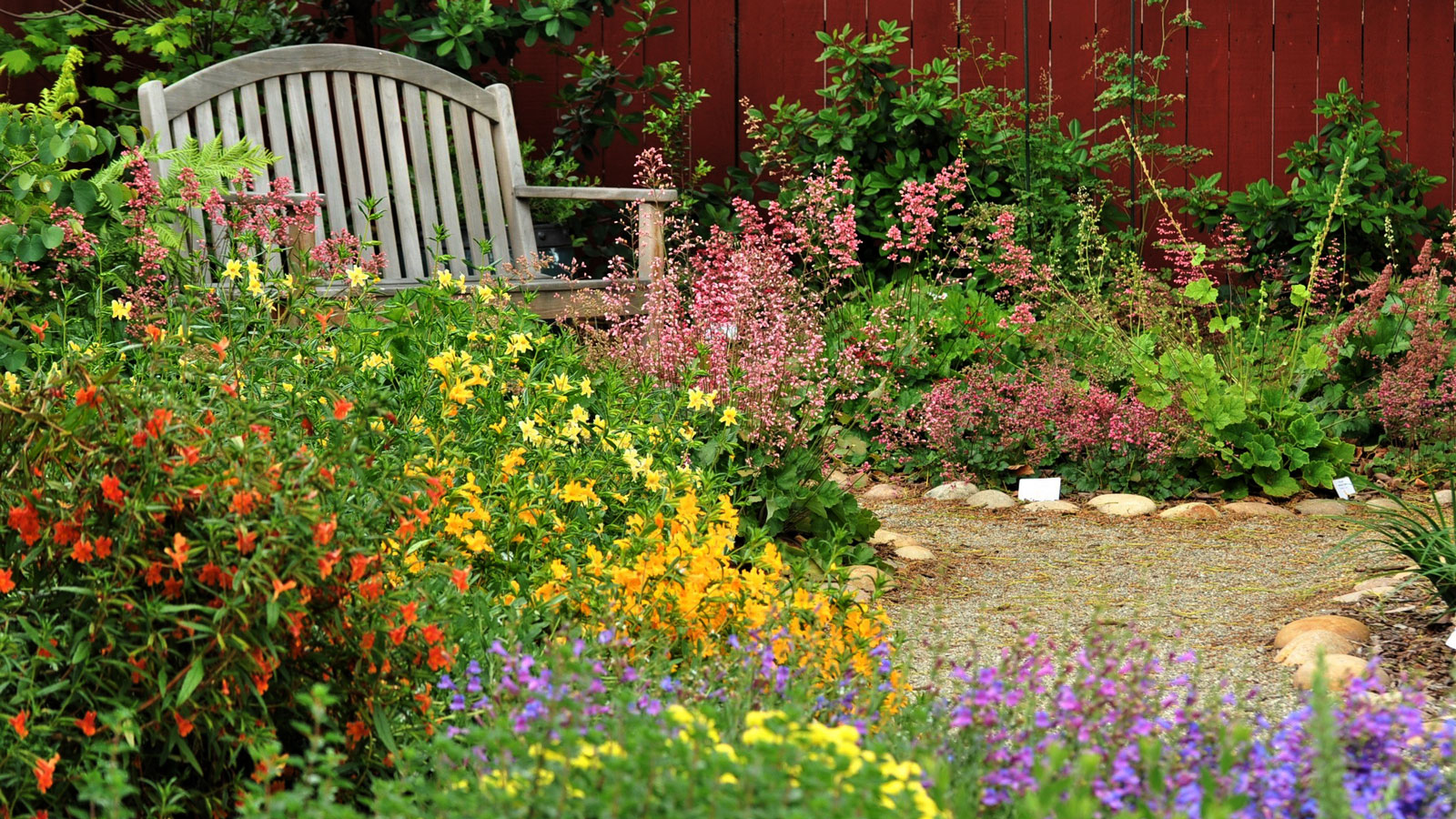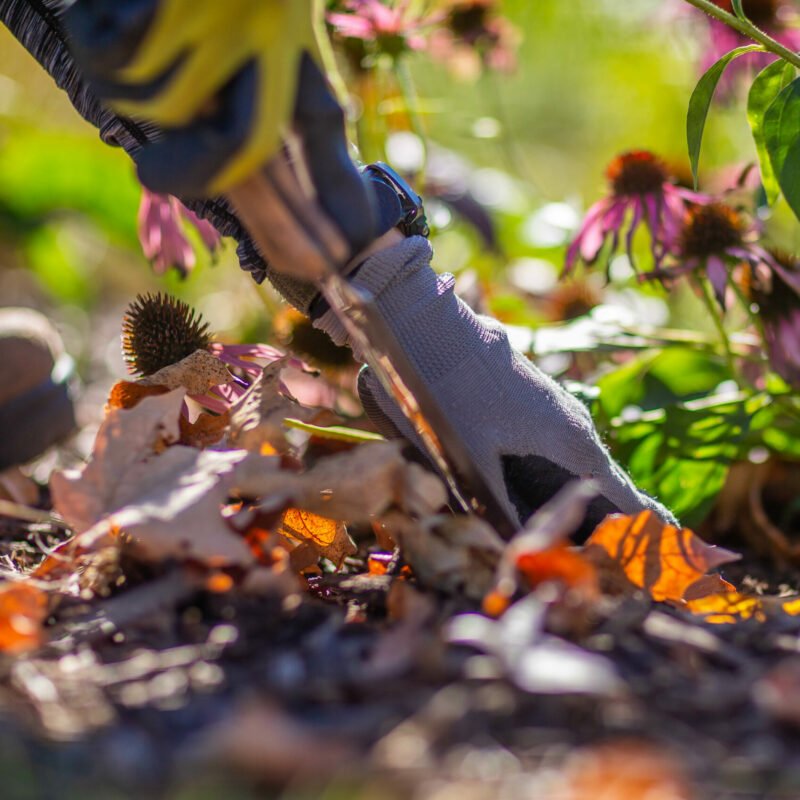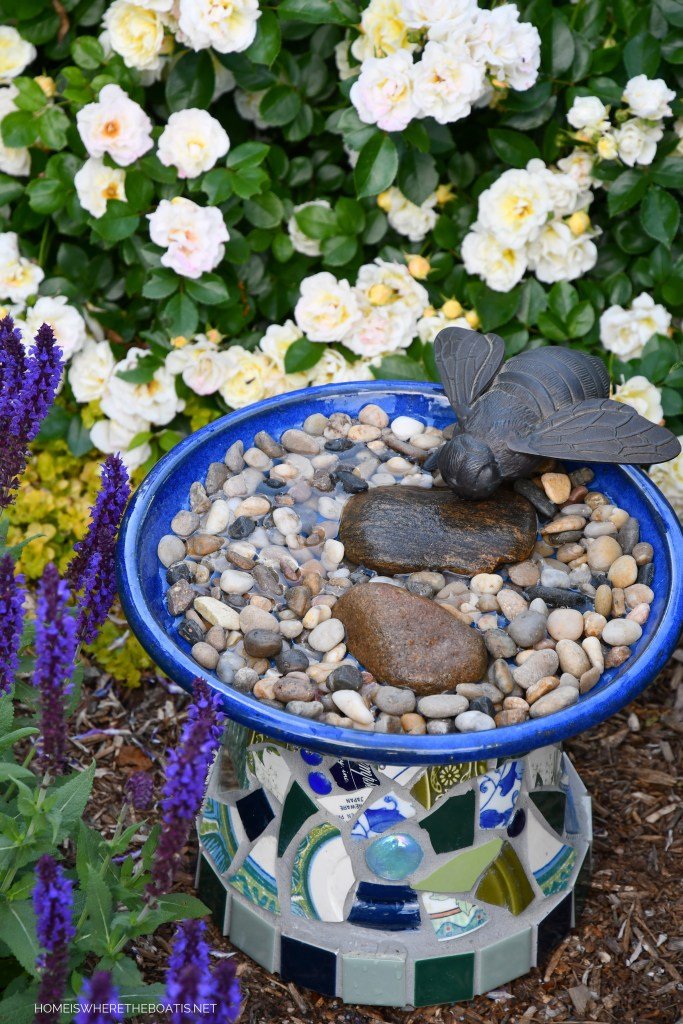Summer heat can challenge even the hardiest pollinator gardens. Proper hydration becomes critical for these havens.
As the summer sun climbs high, your pollinator garden thirsts for attention. The delicate dance of watering correctly can mean the difference between a vibrant sanctuary and a wilted patch. Gardens buzzing with bees, butterflies, and hummingbirds bring life to our yards.
They rely on us just as much as we delight in their presence. Yet, with rising temperatures, keeping these gardens flourishing requires more than a casual sprinkle. It’s about timing, technique, and the type of water we use. This guide ensures your blooms stay bright and your visiting pollinators remain happy. You’ll learn to water deeply but wisely, avoiding common mistakes that can turn your lush oasis into a dry desert. Whether you’re a seasoned gardener or a beginner with a love for nature, these tips will help your pollinator garden thrive through the sizzle of summer.

Essentials Of Pollinator Garden Hydration
Summer brings heat, and with it, the need for proper garden hydration. Pollinator gardens are not just about flowers and plants; water is crucial. Let’s dive into how to keep these essential creatures quenched and healthy.
Identifying Water Needs Of Different Pollinators
Each pollinator has unique water needs. Bees, for instance, require shallow water sources. Butterflies prefer muddy puddles to sip minerals and water. Hummingbirds, on the other hand, seek moving water like drips or sprays. Know each preference:
- Bees: Shallow dishes with stones for landing
- Butterflies: Muddy spots or shallow puddles
- Hummingbirds: Misters or small fountains
Importance Of Consistent Water Supply
A steady water source keeps pollinators returning. It helps them through dry spells and extreme heat. Consistency is key. Here’s why:
| Pollinator | Reason for Consistent Water |
|---|---|
| Bees | Water is vital for cooling hives and digesting food. |
| Butterflies | They need regular sips for hydration and nutrition. |
| Hummingbirds | Reliable water helps with metabolism and feather health. |
Set up a schedule, check water levels daily, and refill as needed. Your pollinator friends will thank you!

Choosing The Right Time To Water
Knowing when to water a pollinator garden in summer is key. Plants need moisture but with care. Timing matters for plant health and water conservation. Let’s dive into the best practices.
Best Times Of Day For Watering
Early morning is prime time for watering. It’s cool, so water soaks in and roots drink deep. Leaves dry before night, dodging disease. Late afternoon is second best, but avoid evening to keep plants healthy.
How Weather Influences Watering Schedules
Weather shifts mean watering tweaks. Hot, dry spells demand more water. Overcast, cooler days need less. Watch forecasts, adjust the hose. Your garden will thrive with this smart care.
Water Sources For Pollinators
Water Sources for Pollinators play a vital role in summer. Pollinators need water to survive. This section explains how to provide it. We look at natural and artificial ways.
Creating Natural Watering Holes
Natural watering holes mimic nature. They attract pollinators. Here’s how to create one:
- Choose a shallow dish or a part of the garden.
- Fill it with clean water. Add some stones or sticks. These help pollinators land and drink safely.
- Place it near flowers. Pollinators find it easily.
This simple method supports bees, butterflies, and more.
Setting Up Artificial Water Stations
Artificial water stations are easy to make. They ensure water supply. Follow these steps:
- Get a shallow container. Bright colors attract pollinators.
- Add water. Keep the level low to prevent drowning.
- Place it in a sunny spot. Close to plants is best.
Remember to change the water regularly. Clean the station often. This keeps the water safe for pollinators.
Water Conservation Strategies
As summer heat intensifies, water conservation in pollinator gardens becomes critical. Smart strategies ensure gardens thrive while conserving water. Let’s explore effective methods to keep your garden blooming with minimal water waste.
Using Drip Irrigation Systems
Drip irrigation offers precise watering. It delivers water directly to plant roots. This method reduces evaporation and runoff. It’s ideal for gardens needing regular, controlled water amounts. Drip systems are easy to install and can save significant water over time.
- Install drip lines near plant bases
- Adjust the flow for each plant’s needs
- Water early in the morning to reduce evaporation
Mulching To Retain Soil Moisture
Mulching is a gardener’s best friend in summer. It locks in soil moisture and keeps roots cool. Organic mulches like straw or wood chips add nutrients as they decompose. A thick mulch layer can greatly reduce the need for watering.
- Spread a 2-3 inch mulch layer around plants
- Choose organic mulches for added soil health
- Reapply mulch as needed throughout the season
Protecting Water Quality
Protecting Water Quality is key in maintaining healthy pollinator gardens during summer. Pollinators, like bees and butterflies, need clean water to thrive. Let’s explore how to water gardens without harming water quality.
Avoiding Harmful Chemicals
Chemicals can seep into the ground and pollute water sources. It’s vital to choose products wisely. Seek out organic or chemical-free options for your garden.
- Use compost to enrich soil without chemicals.
- Select eco-friendly sprays for pests and diseases.
- Check labels for non-toxic ingredients.
Natural Fertilizers And Pest Control
Natural solutions are better for water and pollinators. They keep the garden safe and productive.
| Natural Fertilizer | Natural Pest Control |
|---|---|
| Compost | Neem oil |
| Worm castings | Ladybugs |
| Fish emulsion | Diatomaceous earth |
Remember, clean water means healthy plants and pollinators. Make wise choices to keep your garden blooming.
Monitoring And Adjusting Water Levels
Monitoring and Adjusting Water Levels is key to a healthy pollinator garden during summer. The right water amount helps plants thrive. Too much or too little can harm them. Let’s learn how to keep the balance.
Recognizing Signs Of Overwatering And Underwatering
To keep your garden happy, watch for signs. Plants tell us when they need help.
- Overwatering: Leaves turn yellow. Soil feels soggy.
- Underwatering: Leaves droop. Soil is dry.
Seeing these signs? Adjust your watering plan.
Adapting To Seasonal Changes
Summer means hot days. Plants may need more water. But, too much can hurt them.
- Check the soil. Is it dry an inch down? Time to water.
- Water in the morning. It helps plants through the hot day.
- Use a rain gauge. It tells you how much rain fell. Adjust watering based on this.
This way, your garden stays healthy. And it helps our pollinator friends too.
Educating On The Importance Of Watering
Watering pollinator gardens is vital in summer. These gardens support bees, butterflies, and other pollinators. With the right moisture, plants thrive, offering nourishment and habitat for these creatures. Let’s explore how to keep these vital gardens hydrated in the heat.
Engaging The Community In Pollinator Conservation
Community involvement is key for pollinator garden success. By educating locals, we ensure gardens get proper care. Here are ways to get everyone on board:
- Organize ‘Save the Bees’ campaigns
- Invite experts to talk on pollinator health
- Create a network of garden caretakers
Hosting Workshops And Demonstrations
Workshops teach practical watering skills. Demonstrations show effective techniques first-hand. Here’s what to cover:
- Setting up drip irrigation systems
- Choosing the best time for watering
- Measuring soil moisture levels
Remember, a well-watered garden is a thriving garden. Join us in keeping our pollinator friends happy and hydrated!

Innovative Watering Practices
Innovative Watering Practices help your garden thrive while conserving water. During hot summers, pollinator gardens need special care. These tips ensure plants get enough water without waste.
Experimenting With Water-saving Techniques
- Drip irrigation: Delivers water to plant roots, cuts down on evaporation.
- Mulching: Keeps soil moist, reduces need for frequent watering.
- Rain barrels: Collects rainwater for garden use, saves tap water.
- Plant choice: Opt for drought-resistant species that require less water.
Integrating Technology For Efficient Water Use
Smart technology can optimize your garden watering. Sensors measure soil moisture and adjust watering schedules. Smartphone apps can control these systems remotely. This means less water waste and happy plants.
| Technology | Benefits |
|---|---|
| Soil sensors | Monitor moisture, prevent overwatering |
| Timers | Automate watering, save time |
| Apps | Manage systems from anywhere |
Frequently Asked Questions
How Often Should I Water My Pollinator Garden In Summer?
Watering frequency depends on your region’s climate and soil type. Generally, watering deeply once or twice a week is sufficient. Check the soil’s moisture level regularly to prevent over or under-watering. Early morning is the best time to water, reducing evaporation and disease risk.
What’s The Best Way To Water Pollinator-friendly Plants?
The best method is using a soaker hose or drip irrigation system. These methods deliver water directly to the soil, minimizing water waste and keeping the foliage dry. This reduces the risk of plant diseases and is more efficient for deep root watering, encouraging healthier plant growth.
Can Over-watering Affect My Pollinator Garden?
Yes, over-watering can be detrimental. It may lead to root rot, fungal diseases, and suffocate plant roots, reducing oxygen availability. Ensure good soil drainage and adjust watering based on weather conditions. A moisture meter can help gauge the soil’s moisture level accurately.
Do Pollinator Gardens Require Special Watering Care During Heatwaves?
During heatwaves, pollinator gardens may need additional water. Early morning watering helps plants withstand the heat of the day. Mulching can retain soil moisture and keep roots cooler. However, avoid over-watering and ensure soil drainage is optimal to prevent root issues.
Conclusion
Keeping your pollinator garden thriving in summer takes care. Regular, mindful watering ensures flowers bloom and insects buzz. Choose early mornings for watering to give plants a strong start. Use mulch to retain moisture and protect roots. Remember, deep watering encourages deep roots.
Your garden is a haven for bees and butterflies. Let’s keep it flourishing with these simple, effective watering practices. Happy gardening and happy pollinators!


